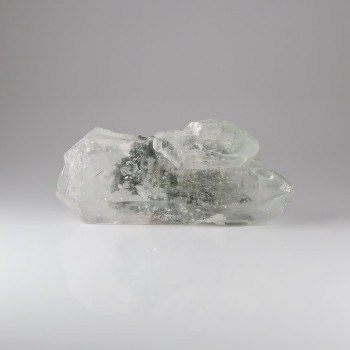Chlorite
Chlorite is a group of relatively common green minerals, often found as foliated sheets, surface growths, or as an inclusion in other materials.
Showing the single result
Information about Chlorite
Chlorite is a group of related minerals, including but not limited to chamosite, clinochlore, cookeite and pennantite; the individual group member minerals are not especially well known and generally the term ‘chlorite’ tends to be used in most collecting circles.
Chlorite mineral species:
- Baileychlore
- Borocookeite
- Chamosite
- Clinochlore
- Cookeite
- Donbassite
- Gonyerite
- Nimite
- Pennantite
- Ripidolite
- Ripidolite
The reasonably well known material ‘Seraphinite‘ is a trade name for Clinochlore used in the new age markets.
Uses and History
There are no particular industrial uses for Chlorite group minerals, although some are used as decorative stones, and pieces of other minerals with Chlorite inclusions can be quite desirable to mineral collectors.
The name chlorite comes from the Greek ‘chloros’, meaning ‘green’, in a reference to its colour. The Greek term also gives its name to the element Chlorine, which (perhaps confusingly!) is not a component of Chlorite minerals.
Mineralogy
Hazards and Warnings
Mineral collectors should wash their hands after handling specimens, to avoid any exposure to potential toxins.
Almost all rocks, minerals (and, frankly, almost all other substances on earth) can produce toxic dust when cutting, which can cause serious respiratory conditions including silicosis. When cutting or polishing rocks, minerals, shells, etc, all work should be done wet to minimise the dust, and a suitable respirator or extraction system should be used.
Translations
Arabic:
- كلوريت
Hindi:
Portuguese:
- clorito
Bengali:
Indonesian:
- klorit
Punjabi:
English:
Italian:
- clorito
Russian:
- Хлорит
French:
Japanese:
- 緑泥石
Spanish:
- Chlorita
German:
- chlorit
Korean:
- 클로라이트
Thai:
- คลอไรต์
Gujurati:
Mandarin Chinese:
- 绿泥石族
Urdu:

